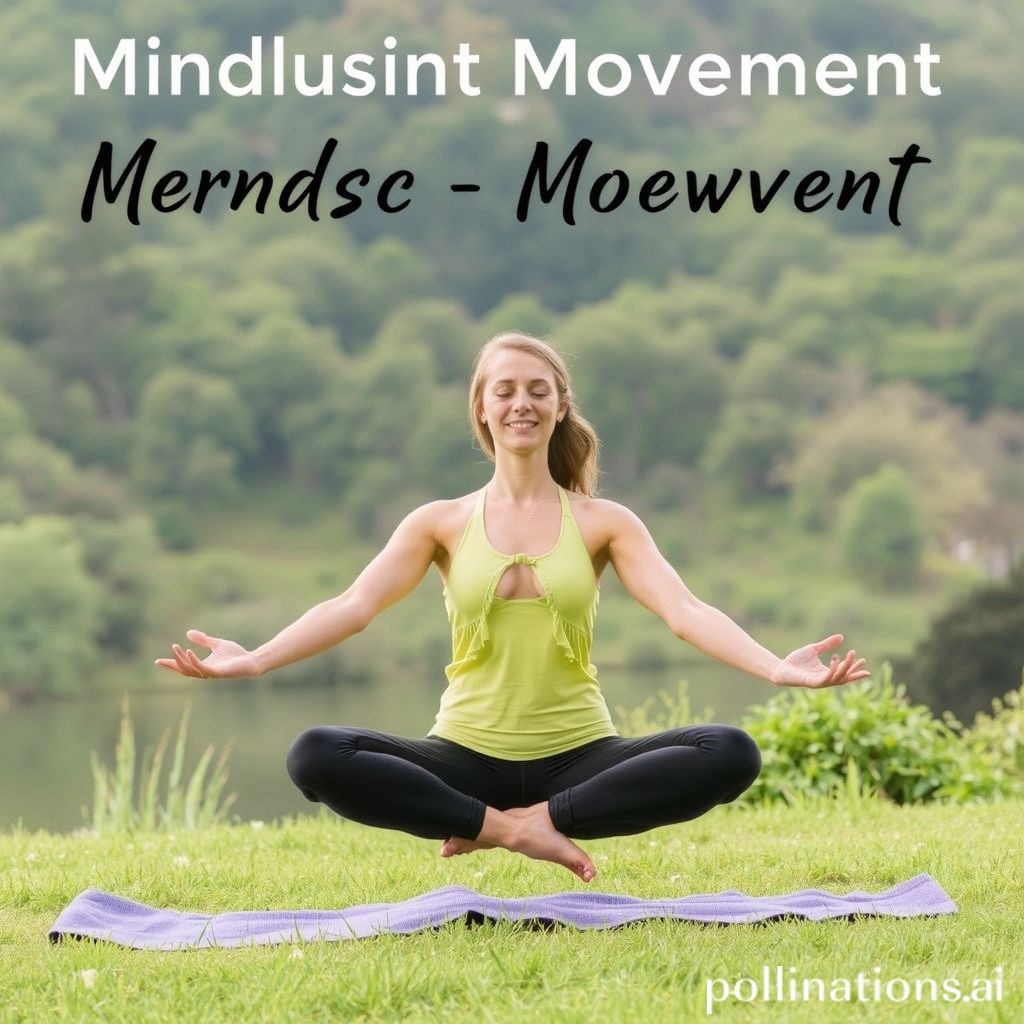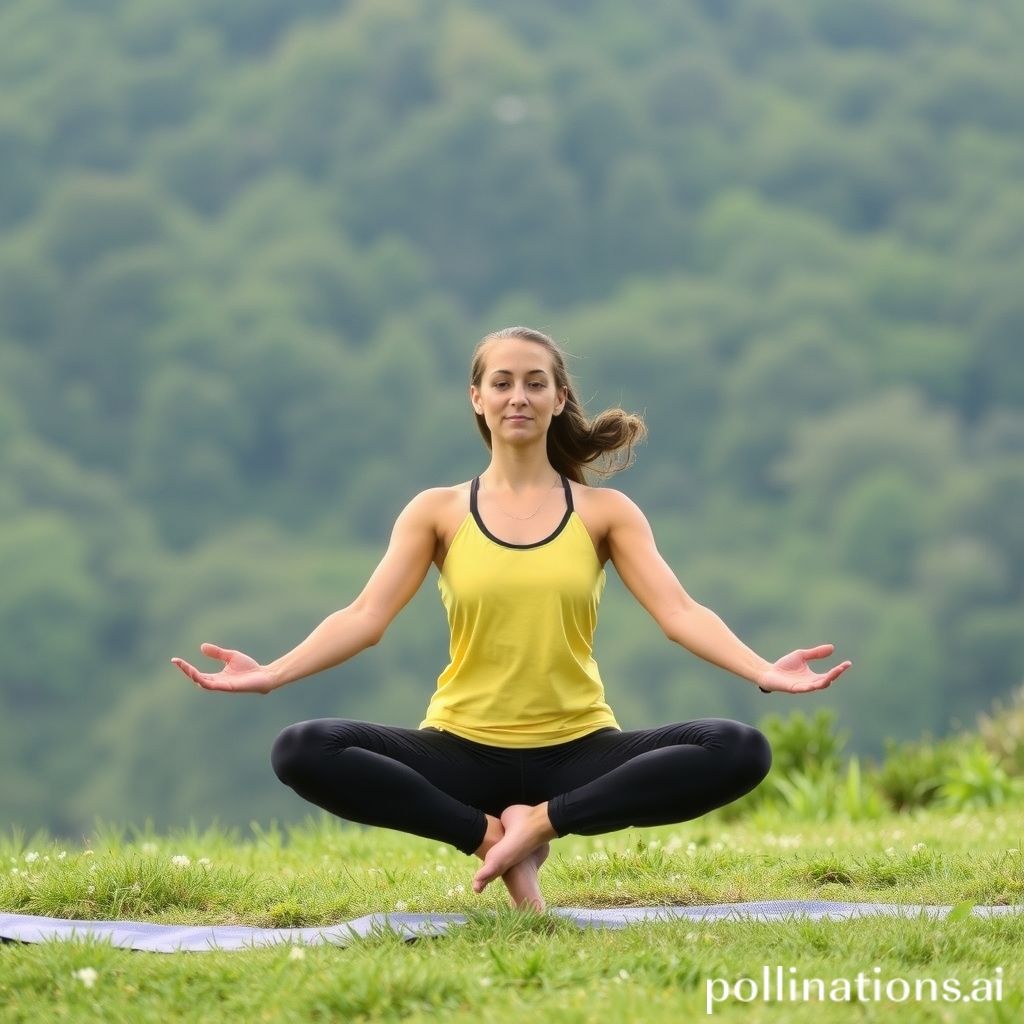Gratitude for mindful movement is the practice of articulating appreciation for the ability to move our bodies in a mindful way. It involves being present in the moment and acknowledging the benefits of movement for our physical and mental well-being.
This practice can empower our overall sense of gratitude and lead to a more positive outlook on life. By melding gratitude into our movement practice, we can cultivate a deeper connection with our bodies and the world around us.
Embracing Mindful Movement
Mindful Movement refers to the practice of engaging in physical activities with full awareness and attention to the present moment. It involves being fully present in your body and mind, allowing you to connect with your body’s sensations, movements, and breath.
1. What is Mindful Movement?
Mindful Movement encompasses various activities such as yoga, tai chi, qigong, and walking meditation. These practices combine gentle movements with focused breathing and mental focus, promoting a state of calmness and relaxation.
2. How Does Mindful Movement Differ from Traditional Exercise?
Unlike traditional exercise, which often focuses solely on physical fitness and achieving specific goals, Mindful Movement emphasizes the integration of body, mind, and breath. It is not solely about burning calories or building strength but rather about cultivating a holistic sense of well-being.
Traditional exercise may involve repetitive movements and a sense of striving, whereas Mindful Movement encourages individuals to listen to their bodies, honor their limitations, and move in a way that feels nourishing and supportive. It promotes a sense of pleasure and enjoyment in the movement itself, rather than solely focusing on the end result.
Furthermore, Mindful Movement emphasizes the importance of being fully present in the moment, allowing individuals to let go of distractions and connect with their inner selves. It encourages a sense of mindfulness, deepening the mind-body connection and fostering a sense of inner peace and tranquility.
To illustrate, let’s consider the example of yoga. In traditional exercise, yoga may be seen as a physical workout, focusing on achieving challenging poses. In contrast, Mindful Movement yoga practice involves being fully present in each pose, paying attention to the breath and bodily sensations, and cultivating a sense of mindfulness throughout the practice.
| Mindful Movement | Traditional Exercise |
|---|---|
| Focus: Mind-body connection, present moment awareness | Focus: Physical fitness, achieving specific goals |
| Approach: Gentle movements, breath awareness | Approach: Repetitive movements, striving |
| Benefit: Reduced stress, enhanced well-being | Benefit: Improved physical fitness, strength |

Getting Started with Mindful Movement
Mindful movement is a powerful practice that combines physical exercise with mindfulness techniques. By engaging your body and mind together, you can experience a deeper level of relaxation, focus, and overall well-being. In this section, we will navigate some simple mindful movement exercises for beginners and guide you on how to create a mindful movement routine.
1. Simple Mindful Movement Exercises for Beginners
Beginners can start their mindful movement journey with these simple exercises:
- Body Scan: Lie down in a comfortable position and bring your attention to different parts of your body, starting from your toes and moving up to your head. Notice any sensations or tension and allow them to release.
- Mindful Walking: Take a slow walk in nature or any quiet space. Pay attention to the sensations in your feet as they touch the ground, the movement of your legs, and the rhythm of your breath.
- Gentle Stretching: Perform gentle stretches to release tension in your muscles. Focus on your breath and the sensations in your body as you move through each stretch.
2. Creating a Mindful Movement Routine
To create a mindful movement routine, follow these steps:
- Set Intentions: Determine your goals for practicing mindful movement. Do you want to reduce stress, increase flexibility, or improve your overall well-being?
- Choose Activities: Select activities that you enjoy and that align with your goals. This could include yoga, tai chi, dance, or any other form of mindful movement.
- Set a Schedule: Decide how often and for how long you will practice mindful movement. Start with a realistic schedule that fits into your daily routine.
- Start Slow: Begin with shorter sessions and gradually increase the duration as you build strength and endurance.
- Stay Mindful: Throughout your practice, stay present and aware of your body, breath, and sensations. Notice any thoughts or distractions and gently bring your attention back to the present moment.
Mindful Movement for Stress Reduction
Stress is a common and often overwhelming aspect of modern life. That being said, there are ways to effectively manage and reduce stress levels. One such technique is mindful movement, which combines physical activity with mindfulness practices to promote relaxation and stress relief.
1. How Mindful Movement Can Help Relieve Stress
Mindful movement involves engaging in physical activities whilst maintaining a present-moment awareness of the body and breath. This practice can help relieve stress in several ways:
- Enhances Mind-Body Connection: By focusing on the sensations of movement and the breath, mindful movement helps to strengthen the connection between the mind and body. This can promote a sense of calm and reduce stress.
- Reduces Muscle Tension: Physical activity, combined with mindfulness, can help release tension and tightness in the muscles. This can alleviate physical symptoms of stress, such as headaches or muscle aches.
- Promotes Relaxation: Mindful movement encourages a state of relaxation by shifting the focus away from stressors and onto the present moment. This can help reduce anxiety and promote a sense of peace.
2. Mindful Movement Techniques for Stress Relief
There are various mindful movement techniques that can be practiced to alleviate stress:
- Yoga: Yoga combines physical postures, breathwork, and meditation to promote relaxation and reduce stress. It can help improve flexibility, strength, and overall well-being.
- Tai Chi: Tai Chi is a gentle form of martial arts that involves slow, flowing movements. It promotes balance, flexibility, and relaxation, making it an effective stress reduction technique.
- Walking Meditation: Walking mindfully can be a simple yet powerful way to reduce stress. Paying attention to the sensations of each step and the surrounding environment can help calm the mind and reduce anxiety.

Mindful Movement for Improved Focus and Concentration
In today’s fast-paced world, it can be challenging to maintain focus and concentration. In contrast, research has shown that including mindful movement into your daily routine can have a positive impact on cognitive function. This section explores the connection between mindful movement and improved focus, as well as provides exercises to empower concentration.
The Connection Between Mindful Movement and Cognitive Function
Engaging in mindful movement practices, such as yoga or tai chi, has been found to elevate cognitive function. These activities require a combination of physical movement and mental focus, which can help improve attention span and concentration. Additionally, mindful movement helps reduce stress and promote relaxation, leading to a clearer mind and better cognitive performance.
Mindful Movement Exercises to Enrich Focus
1. Yoga: Practicing yoga poses, such as the tree pose or the warrior pose, can help improve focus and concentration. These poses require balance and mental presence, allowing you to train your mind to stay focused on the present moment.
2. Tai Chi: This ancient Chinese martial art combines slow, flowing movements with deep breathing and mental focus. Regular practice of tai chi can improve attention and concentration, as well as promote relaxation and reduce stress.
3. Walking Meditation: Engaging in a walking meditation involves focusing your attention on each step and the sensations in your body as you walk. This practice can help clear your mind and improve concentration.
4. Mindful Stretching: Taking a few minutes to stretch your body mindfully can help improve blood flow to the brain and enrich cognitive function. Focus on each movement and the sensations in your body as you stretch.
| Exercise | Description |
|---|---|
| Yoga | Practicing yoga poses to improve focus and concentration. |
| Tai Chi | Engaging in slow, flowing movements with deep breathing and mental focus. |
| Walking Meditation | Focusing attention on each step and the sensations in the body meanwhile walking. |
| Mindful Stretching | Stretching the body mindfully to improve blood flow to the brain. |

Mindful Movement for Emotional Well-being
Mindful movement is a powerful practice that can greatly optimize emotional well-being. By combining physical movement with mindfulness, individuals can experience improved emotional health and find balance in their lives. In this section, we will ponder the benefits of mindful movement and discuss various practices that can promote emotional balance.
1. How Mindful Movement Can Improve Emotional Health
Mindful movement has been shown to have a positive impact on emotional health. When we engage in physical activity with a mindful approach, we cultivate a deeper connection between our mind and body. This connection allows us to become more aware of our emotions and sensations, helping us to better understand and regulate our emotional states. Research has also demonstrated that mindful movement can reduce stress, anxiety, and depression, in the course of promoting feelings of calmness and well-being.
2. Mindful Movement Practices for Emotional Balance
There are various mindful movement practices that can help individuals achieve emotional balance. Some popular practices include:
- Yoga: Yoga combines physical postures, breathwork, and meditation to promote physical and emotional well-being. It can help individuals release tension, improve flexibility, and cultivate a sense of inner peace.
- Tai Chi: Tai Chi is a gentle martial art that involves slow, flowing movements and deep breathing. It is known to intensify relaxation, improve focus, and reduce stress levels.
- Dance Therapy: Dance therapy combines movement and music to promote emotional expression and release. It allows individuals to connect with their emotions and find healing through creative movement.
Table: Benefits of Mindful Movement for Emotional Well-being
| Benefit | Description |
|---|---|
| Stress Reduction | Mindful movement helps reduce stress levels and promotes relaxation. |
| Improved Emotional Regulation | Practicing mindful movement enhances awareness of emotions and facilitates better emotional regulation. |
| Enhanced Well-being | Mindful movement promotes a sense of calmness, happiness, and overall well-being. |
Read More:
1. Grounded Thanks: Practices Rooted in Gratitude
2. Breath of Thanks: Gratitude’s Vital Connection